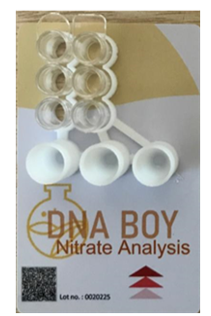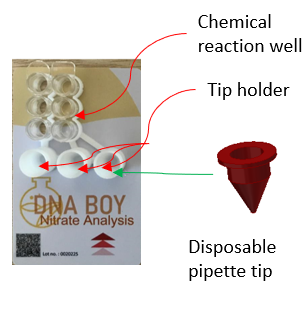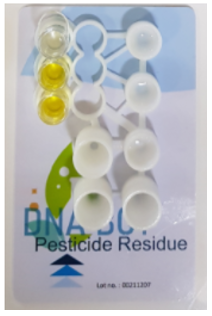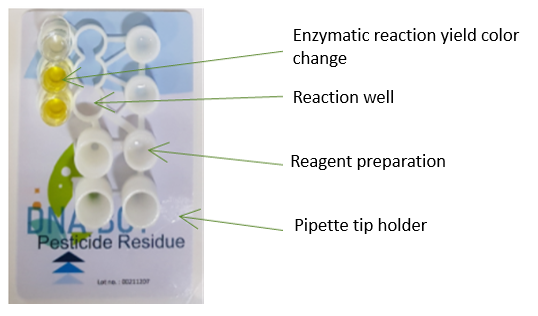DNABOY's Lab-on-a-card technology
Lab-on-a-chip, also known as microfluidics, is a revolutionary device that has transformed the field of analytical chemistry and biology. This technology enables scientists to perform precise chemical reactions and biochemical assays on a chip that is the size of a postage stamp. The device contains tiny narrow microfluidic channels that allow for the flow of liquid, which is manipulated by microvalves, micropumps, and microchambers.
Lab-on-a-chip devices have a wide range of applications, including rapid disease diagnosis at quarantine sites, environmental monitoring, drug discovery, and point-of-care clinical diagnostics. They are ideal for performing complex and sensitive biochemical assays, as they require only small amounts of sample and reagents, and can perform multiple assays simultaneously on a single chip. This allows for high-throughput screening of compounds, which can accelerate the drug discovery process and reduce costs.
One of the key advantages of lab-on-a-chip technology is its ability to miniaturize and integrate complex biochemical assays onto a single platform. By incorporating multiple reaction chambers, channels, and detectors onto a single chip, lab-on-a-chip devices can perform complex biochemical assays with high precision and accuracy, while minimizing sample and reagent consumption.
In addition, lab-on-a-chip devices are easy to use and require minimal training, making them ideal for use in point-of-care diagnostics and field studies. They can also be easily transported and stored, making them ideal for use in resource-limited settings.
The DNABOY lab-on-a-card platform is an innovative device that revolutionizes the field of analytical chemistry and biology. Unlike traditional lab-on-a-chip technology, the DNABOY lab-on-a-card platform utilizes a miniaturized micropipette device instead of microfluidic channels to handle liquids. This approach significantly reduces manufacturing costs and simplifies the liquid handling process.
The use of micropipette devices on the DNABOY lab-on-a-card platform offers several advantages over traditional microfluidic channels. Firstly, it allows for more precise and accurate handling of liquids, which is essential in conducting complex biochemical assays. Secondly, it reduces the risk of cross-contamination between samples, as the micropipette can be easily cleaned and sterilized between experiments. Thirdly, the use of micropipette devices makes it easier to integrate the lab-on-a-card platform with other laboratory equipment, such as spectrophotometers and microscopes.
Another significant advantage of the DNABOY lab-on-a-card platform is its ability to closely mimic traditional human research. Because it is operated by micropipette, it provides a more intuitive experience for researchers, which can improve accuracy and reduce errors. This also makes it easier for researchers to adapt to the lab-on-a-card platform, as they are already familiar with the use of micropipettes in traditional human research.
In addition to these advantages, the DNABOY lab-on-a-card platform is also easy to use and requires minimal training, making it ideal for use in point-of-care diagnostics and field studies. It can also be easily transported and stored, making it ideal for use in resource-limited settings.
Overall, the DNABOY lab-on-a-card platform offers a unique and innovative approach to fluid handling that has numerous advantages over traditional lab-on-a-chip technology. Its ability to closely mimic traditional human research, combined with its ease-of-use and low manufacturing costs, make it an ideal tool for a wide range of scientific applications, including drug development, toxicology, and environmental monitoring, among others.
Session1. Designing a Labcard for Enzyme Inhibition Assay
Lab-on-a-card is a revolutionary technology that has transformed the field of analytical chemistry and biology. It is a microfluidic device that is designed to perform precise biochemical assays on a small, credit-card-sized platform. The Lab-on-a-card device has a confined area, with the size of the labcard being 54mm x 86mm and 0.8mm thick, which is exactly the same as a credit card.
Every labcard has at least one pipette tip socket and a couple of reaction wells. The sockets and wells are precisely located on the labcard and their XY coordinates need to be recorded and communicated to the Labboy card robot. This allows the robot to accurately and precisely move the pipette to the desired location, insert it into the socket, and perform the necessary liquid handling task.
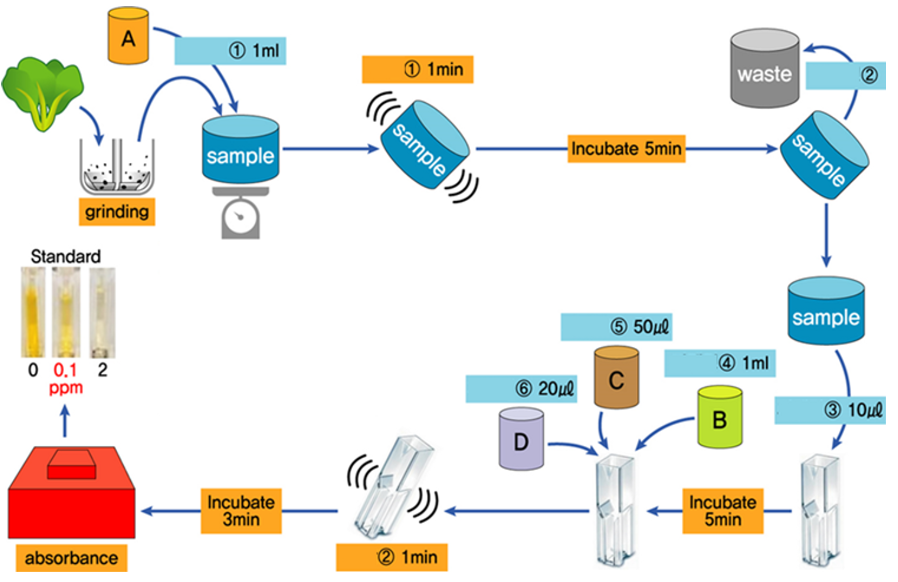
Enzyme inhibition assay is a commonly used method in biochemistry to detect substances that interfere with enzyme activity. In this tutorial, we will design a labcard for conducting an enzyme inhibition assay using the DNABOY lab-on-a-card platform.
Step 1. Materials
Before we begin, we need to gather the necessary materials and reagents for the assay. Here is a list of what we will need:
- DNABOY lab-on-a-card platform
- Acetylcholinesterase (AChE)
- Acetylthiocholine (ATCh)
- 5,5'-Dithiobis(2-nitrobenzoic acid) (DTNB)
- Pesticide sample
Step 2. Preparing the Labcard
1. Load the micropipette with 10 µL of AChE solution and dispense it into well 1.
2. Add 10 µL of ATCh to well 2.
3. Add 10 µL of the pesticide sample to well 3.
4. Add 10 µL of DTNB to well 4.
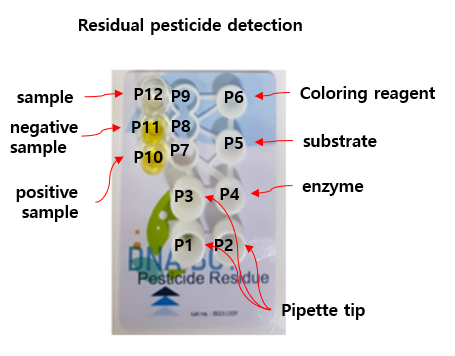
Step 3. Write assay procedure
1. Mix the contents of wells 1, 2, and 3 by pipetting up and down several times
2. Incubate the labcard at 37°C for 10 minutes.
3. Add 10 µL of DTNB to well 2 and mix well.
4. Measure the absorbance of well 4 at 412 nm using a spectrophotometer.
Step 4. Write block code
1. Log on block coding editor of Labboy server
2. Complete making block code
3. Upload the codes
Impedit ipsum quae et aliquid doloribus et voluptatem quasi. Perspiciatis occaecati earum et magnam animi. Quibusdam non qui ea vitae suscipit vitae sunt. Repudiandae incidunt cumque minus deserunt assumenda tempore. Delectus voluptas necessitatibus est.
Sunt voluptatum sapiente facilis quo odio aut ipsum repellat debitis. Molestiae et autem libero. Explicabo et quod necessitatibus similique quis dolor eum. Numquam eaque praesentium rem et qui nesciunt.
Project information
- Category Labcard design
- Client SAGA Global Academy
- Project date 5 Aug, 2023
